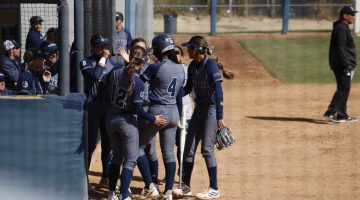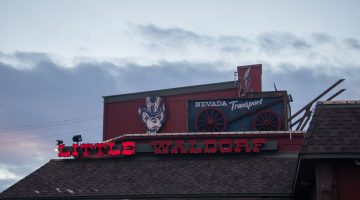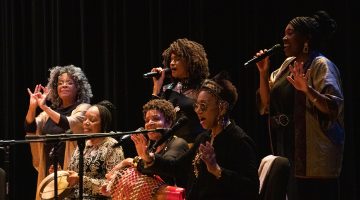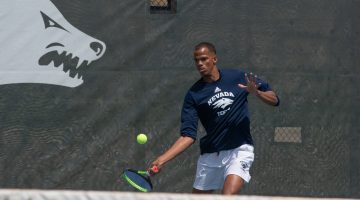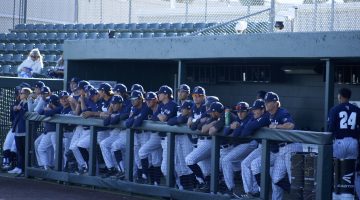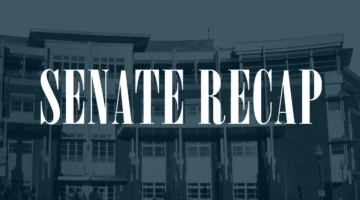
The Pennington Student Achievement Center stands unfinished on Monday, Jan. 18, 2016. It is the building that incorporates the most universal design on campus.
Over the last few years, the campus of the University of Nevada, Reno, has been undergoing serious construction in an attempt to keep up with the demands of incoming student growth. The university is currently working to build a new dormitory building and fitness center, among other future projects. Despite the massive upgrades, none of the new buildings have been designed to be fully universal.
The National Disability Authority defines universal design as “the design and composition of an environment so that it can be accessed, understood and used to the greatest extent possible by all people regardless of their age, size, ability or disability.”
The idea is that the building can be used by anyone, and everyone can access everything in the same way. A student in a wheelchair should be able to use the same entrance with the same ease as an able-bodied student. It benefits every person who wishes to use it.
Universal design can be as simple as including left-handed options, or as complex as providing signs that can bridge a language barrier.
Some buildings, such as the Pennington Student Achievement Center, have been built with universal design in mind. The classrooms have been set up in a way that allows everyone to see what the instructor is teaching by using multiple projectors, and anyone can sit at a table of their choosing. The entrance is wide enough for wheelchairs to fit through and there is an easily-accessible ramp.
While this building incorporates universal design the most, there is still more that can be done, according to Blaine Harding, director of The Center Every Student. Every Story.
“You shouldn’t have to move desks and move tables because you found out you got a student in a wheelchair in your class,” Harding said. “That classroom should already be set up so that anybody with any form of disability can get into a classroom, can get into a building and they don’t have to worry about the door being too hard to open up, the ramp being in the back or having no ramp at all. All of it has to be accessible.”
Universal design does not have to be costly, but it needs to be considered throughout the entire process for it to work. It requires a lot of thought going into the design of the building and a professional who is an expert in the principles of universal design.
There are at least four more buildings that are being added or renovated on campus in the next few years, and Harding hopes that the university will go even further in the direction of universal design.
“I hope that all these new buildings, if not completely universally designed, are as universally designed as the budget allows them to be. I want them to take that into consideration. They have to take that into consideration. If we are a campus that values diversity and inclusiveness, inclusiveness means everybody,” Harding said.
Universal design does not only apply to buildings but to environments and products. For example, students who are blind should be able to access notes on Canvas with the same ease as every other student. In order for any product to be considered universal, it must be equally accessible.
Harding gave an example of a student in a wheelchair using the soda machine. If the student has a hard time putting money in the machine and needs help, or decides not to bother with the process at all, then they cannot use the soda machine in the same way as an able-bodied student: the system is not universal, Harding explains.
Students can help those with disabilities by being more aware of their surroundings and the challenges other people face every day.
Sophie Coudurier, a freshman at UNR with a disability, wants other students to know that when a building is marked accessible, it isn’t usually completely accessible. She also encourages other people to help if they see someone who is disabled struggling with a task.
“The university is very accessible; however, small details such as the height of counters and the slope of a ramp make a huge difference, and if done right they make life easier,” Coudurier said.
Madeline Purdue can be reached at jsolis@sagebrush.unr.edu and on Twitter @TheSagebrush.


